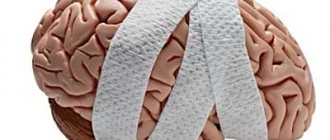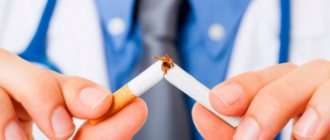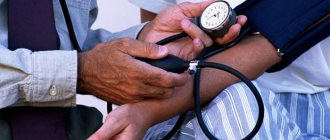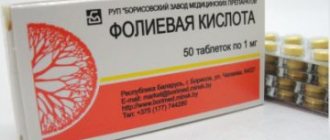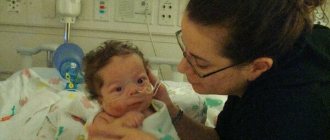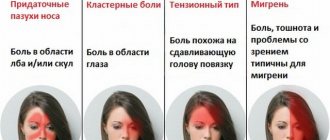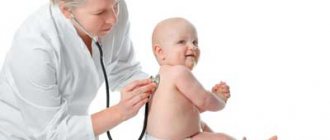What not to do during an attack
Epilepsy is an incurable disease and is classified as chronic.
Therefore, although there are many ways to help sick people, nevertheless, an attack can happen at any time. In the past, an epileptic seizure led people into confusion and confusion, causing sacred fear. Now this disease has been well studied, because according to WHO, more than 40 million people suffer from it. Therefore, even if there are no relatives with epilepsy in your immediate environment, you still need to know the rules of first aid. After all, even a stranger may need it at any moment.
Before helping with an epileptic attack, it is important to remember the rule - do no harm. During convulsions, cardiac massage and artificial respiration are not performed. You should not try to give the patient water.
Important: the patient should not force his mouth to open. This will lead to a broken jaw and injury to the teeth. Also, no hard objects are inserted into the mouth.
It makes no sense to give medications, since they are useless during convulsions. Don't panic if you stop breathing. In this case, resuscitation measures cannot be taken; you can check the pulse. Breathing will resume after a few seconds.
Video on the topic
What does an epileptic attack look like?
Oh video class! Well done to those around you! They put him on a barrel so he wouldn’t choke and supported his head. Well done. I am impressed! Thank you for the video. When I teach classes on first aid, I always discuss this topic with my students.
How to help a person with an epileptic attack?
On the video channel “Bookimed.com”, the coordinating doctor of the Bookimed International Patient Support Center Ivan Koval talks about how to help a person during an epilepsy attack.
Emergency care for an epileptic seizure
On the Urgent Care video channel. In this video we will tell you how to provide emergency care for an epileptic seizure. What is epilepsy? How does an epileptic seizure develop? All this and much more - in our new video!
Providing first aid for epilepsy and cardiac arrest Ed Khalilov
Video channel “Science of Victory”.
Saving a person in theory or in pictures looks very simple. But in life it is not so simple and not so romantic. Ed Khalilov, the head trainer of the “Science of Defeating Ed Khalilov” project, shows what to do in case of an epileptic seizure.
Each of you may encounter a situation where you may need to provide first aid, just on the street. After all, an epileptic attack or cardiac arrest are completely life-like phenomena.
And it is important to know how to do it correctly, and what mistakes can be fatal.
Watch the video from certified rescuer of the Ministry of Emergency Situations Ed Khalilov and you will find out:
- signs of an epileptic attack,
- a misconception that can cost a person his life,
- how to determine cardiac arrest,
- how to do artificial respiration correctly,
- how to transfer an unconscious person in the easiest way.
Don't rely on others! It is important to take control of the situation in time.
Video: First aid for epilepsy
How to help the victim if you are sure that he is having an epileptic attack. What should you never do?
How to recognize an epilepsy attack: main signs
Epilepsy begins with abnormal seizures of the trunk and limbs. In a short period of time, it can transform into a fainting state, fog and loss of consciousness. The development of an attack is facilitated by oxygen starvation of the brain lasting from 20-25 seconds. At the beginning of the attack, the patient screams and makes characteristic guttural sounds. With involuntary convulsive contractions of the muscles of the body and face, the following is present:
- risk of biting or tongue sticking;
- loss of ability to speak;
- dizziness, headache, dyspeptic disorders (nausea and vomiting);
- tingling pain in fingers or toes;
- difficulty breathing, suffocation may occur from a recessed tongue;
- drooling, rolling eyes;
- trembling eyelids, vision problems - blurred objects, short-term darkening of the eyes.
80% of cases of epileptic seizures are characterized by suddenness: while performing household chores, the patient is suddenly subjected to abnormal shaking. Less commonly, the development of a seizure is preceded by a peculiar sensation, numbness of the limbs, and breath holding. There is also an intuitive premonition of an upcoming attack. At such moments, a person turns to others with a warning or for help.
Clinical picture
The patient becomes angry and aggressive, absent-minded and picky. Patients complain of intense pain in the body, especially in the arms and legs. Headache and dizziness are noted, and weakness is present before the seizure occurs.
The consciousness of such a patient is confused. The patient experiences speech disturbances and hallucinations (visual, gustatory, olfactory and auditory).
There is increased salivation and rolling of the eyeballs. The attack is accompanied by screams. Uncontrolled bowel movements and urination are possible.
Immediately before the attack, sleep disturbances appear: insomnia, difficulty falling asleep. There are early awakenings in the middle of the night and in the morning. Patients complained of a sharp decrease in appetite and increased irritability.
The severity of attacks varies. Short-term disturbances of consciousness are possible. In some cases, tonic and clonic convulsions (characteristic of epilepsy) are observed. Sometimes status epilepticus develops - several seizures in a row.
In most cases, patients experience nonconvulsive seizures. They are characterized by disturbance or loss of consciousness, and an angry (dysphoric) mood appears.
All subsequent seizures manifest themselves in the same way as the first. During convulsions, the tonic phase predominates.
Breathing disturbances are noted. Some attacks are characterized by a sharp and sudden stop in speech. Patients may pronounce words and phrases that do not correspond to the topic of the conversation.
After seizures, patients feel severe fatigue and asthenia is observed. Twilight stupefaction is noted. Psychomotor (mental and motor) agitation may occur.
After a seizure, insomnia, night and early awakenings may occur. Dreams are fantastic. Against the background of insomnia, patients experience delirium - this state of consciousness is accompanied by visual hallucinations.
Over time, a personality change occurs, which is characteristic of alcoholic degradation, and not of epileptic disease. Each attack is dangerous, since the patient can receive injuries of varying severity during a fall. There is a risk of suffocation from vomit ingested.
As mentioned above, the main causes of alcoholic epilepsy in adults are long-term consumption of alcoholic beverages. The clinical picture of this phenomenon is similar to the idiopathic form of epileptic crisis. At the time of the attack, the patient experiences increased muscle tone, muscle spasms, and problems with the respiratory system.
A distinctive feature of the alcoholic form of the disease is a pronounced personality disorder. Problems with concentration lead to causeless aggression and anger. A mental disorder is characterized by changes in behavior patterns and dysfunction of the speech apparatus. Personality disorders can manifest themselves in the form of depression, insomnia and suicidal tendencies.

During an epileptic attack, the patient throws back his head, which can lead to the tongue recessing. In such a situation, the risk of death due to asphyxia increases significantly. Also, against the background of an epileptic crisis and destructive processes occurring in the brain, patients experience attacks of hallucinations.
Epilepsy is a neurological disease or group of diseases in which a person experiences sudden seizures
Rules for first aid for epilepsy
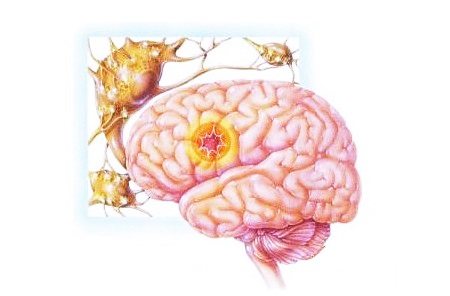
Significant enlargement of the pupils.
Untimely hyperactivity, or, on the contrary, drowsiness.
Unreasonable increase in anxiety level.
Lack of response to external stimuli.
If you suspect that a person is about to have a seizure, you need to prepare for it as quickly as possible.
Clear the surrounding area, remove or move potentially dangerous objects (with sharp corners, electrical appliances).
Ask the person if they have had seizures before (if this information is not available).
Free your neck from all things: remove your scarf, tie, unbutton your shirt.
Prepare a pillow or any other soft object under your head.
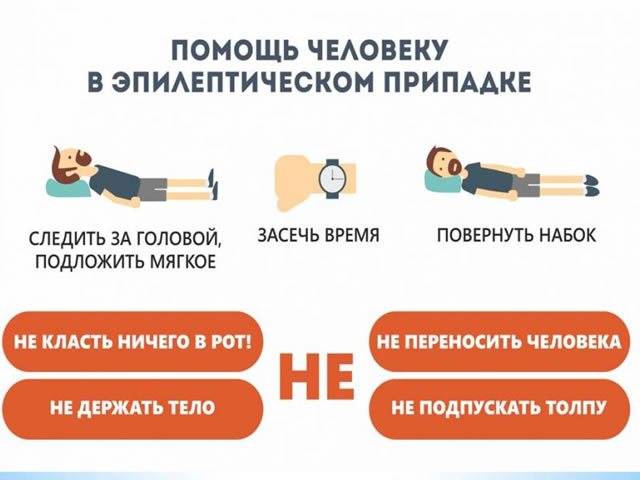
Open the windows in the room to ensure maximum air flow.
In order to competently provide first aid, it is important not to get confused and not start to panic.
Found an error in the text? Select it and a few more words, press Ctrl Enter
Do not be alarmed by the appearance of foam at the mouth and severe cramps. This is normal during an epileptic seizure.
Make the person's breathing as easy as possible; you may need to take off your jacket or unfasten your trouser belt.
You need to try to turn your head to the side, in any direction. But you can't put too much pressure on her. In this case, you need to hold the patient's head at an elevation so that saliva and tongue do not block the airways.
You cannot hold a person in one position by force. This can cause harm in the form of a dislocation or broken bone.
If a person has clenched his jaws tightly, he should not open them. This action is absolutely meaningless, and besides, it will not be possible to unclench your teeth during an attack.
You can't give a person water.
There should always be something soft under his head.
If the jaws are not brought together, then it is advisable to place some not very hard object between the teeth. A tourniquet made of any fabric will do. These actions are aimed at preventing tongue biting.
A person may experience a brief cessation of breathing during a seizure. No action should be taken to restore it; it will return in a few seconds. You just need to check your pulse.
If involuntary urination occurs, then until the attack ends, it is necessary to cover the lower body with a cloth. This will relieve the additional irritant in the form of odor and intensify the attack.
When there is no threat to the life of the person with whom the seizure occurred, then there is no need to carry or move him until the end of the attack. If there is danger (for example, the patient is in water or on the roadway), then it is necessary to lift him by the armpits and drag him to another place, holding him by the torso.
You should not perform emergency resuscitation measures. There is no need for cardiac massage or artificial respiration. The exception is when water gets into the patient's lungs.
It is not advisable to offer medications to the patient. In any case, their action will begin when the attack ends.
All actions must be clear. In such a situation there is no place for panic and confusion.
When the attack is over, you cannot leave the person alone.
The patient's body will be in a relaxed state, so it will not be difficult to shift him onto his side.
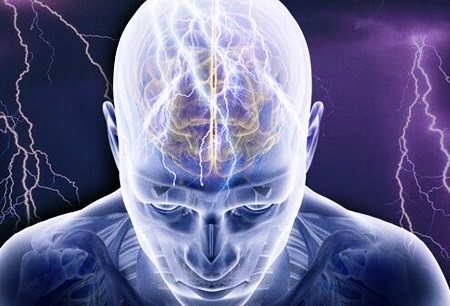
If everything happened on the street, and a crowd of curious people gathered around, then you need to ask them to disperse. This is done in order to ensure the psychological comfort of the epileptic. Only those from whom you can really get help should remain.
If the patient tries to get up and walk, then you need to provide him with support, because residual convulsions can last about another 15 minutes.
It may take up to 15 minutes for a person's condition to return to normal.
You cannot force a person to take medicine. As a rule, such patients know very well what they need and, after the attack is over, they will take the necessary pills on their own.
In order not to provoke a new attack, you should not give the patient coffee or offer him spicy or salty foods.
If a person is in suitable conditions for this, then he needs to be provided with rest. Drowsiness is a completely normal reaction of the body to an attack.
But sometimes it is necessary to urgently call an ambulance.
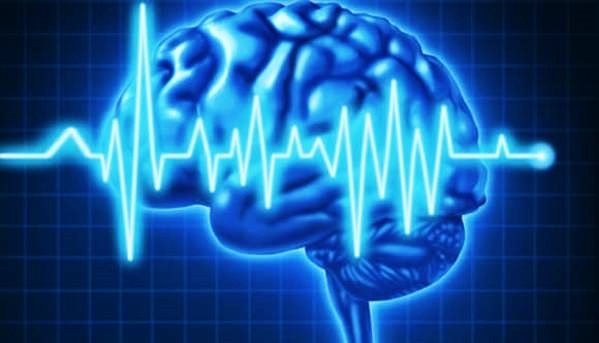
The attack is prolonged (more than 3 minutes).
The attack occurred in a child, an old man or a pregnant woman.
The man was seriously injured.
Breathing does not return after a seizure.
The convulsions have stopped, but consciousness does not return to the person.
The attack occurred in the water, and it entered the patient’s lungs.
This is the first attack.
In other cases, you can cope on your own. Moreover, when consciousness returns to a person, he most often knows what needs to be done next.
Author of the article: Andrey Vladimirovich Sokov, neurologist
Main factors and diagnosis of falling sickness
The symptoms that occur with alcoholic epilepsy are very similar in nature to ordinary epilepsy, but have some features.
Thus, an alcoholic experiences personality degradation, manifested by absent-mindedness, anger, resentment and pickiness, speech is distorted and sleep is disturbed. Alcoholic epilepsy is characterized by the appearance of muscle cramps in a person. But the attack does not necessarily begin with them. The patient may initially experience:
- burning headache;
- feeling of weakness throughout the body;
- feeling of nausea;
- the secretion of the salivary glands increases;
- the chest spasms;
- hoarse breathing appears;
- dizziness;
- blue lips occur;
- the skin around the mouth turns pale;
- eyes roll;
- the alcoholic emits a high-pitched scream caused by spasms of the vocal cords;
- Uncontrolled urination often occurs;
- presyncope or fainting develops.
Then muscle spasms appear: the body is distorted in an unnatural position, the head and tongue spontaneously tilt back. The consequences for an alcoholic can be unpredictable: from respiratory arrest to death. It should be noted that with toxic damage to one area of the brain, the seizures are unilateral, that is, they spread to individual limbs or the face area. But, if it is extensive, then spasms occur throughout the body.
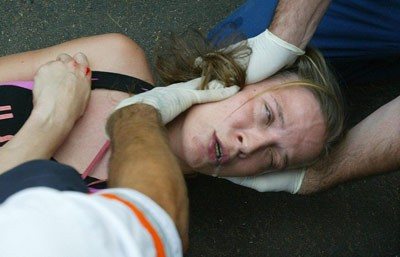
Epileptic seizure
When a person is in a faint state, vital functions are depressed:
- pulse becomes critical (120–170 beats/min.);
- the respiratory rate is reduced to 8–10 breaths/min;
- there is a sharp rise in pressure;
- pupils constrict;
- the body's reflex responses are suppressed;
- there is no response to contacting the person.
After the alcoholic returns to consciousness, he continues to feel unbearable pain and muscle pressure, as a result of which his limbs become immobilized (this can last until the next day). He then falls into a short (approximately 1-2 hours) deep sleep. When the disease is advanced, relapses can occur at short intervals. After an attack, alcoholic insomnia may develop, which is characterized by:
- an attack of hallucinations with a pronounced emotional overtones;
- early awakening;
- temperature increase;
- chills;
- attack of delirium tremens.
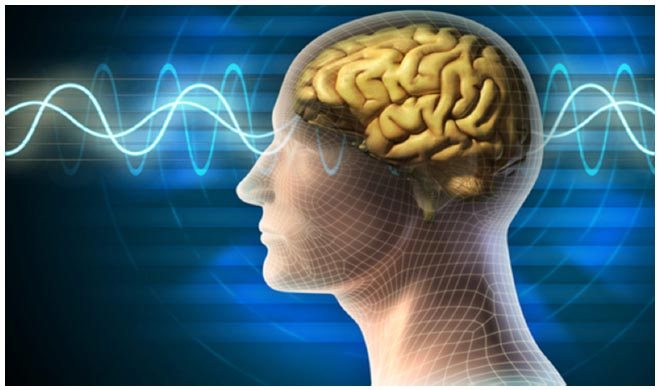
Alcoholic epilepsy is characterized by the fact that after a person stops drinking alcoholic beverages, a second attack can occur within 1–2 days. It can also be triggered by anticonvulsant drugs taken after an epileptic seizure as a preventative measure. This is due to the process of death of its cells launched in the brain.
After the end of an epileptic attack, the alcoholic’s personality deteriorates:
- presence of slurred speech;
- loss of coordination of movements;
- state of increased aggression or lethargy;
- decreased attention;
- a violation of facial expressions is visible.
A person suffering from alcohol addiction can anticipate the onset of an epileptic seizure several days before its onset; he experiences warning signs, expressed in loss of appetite, increased irritability, poor health and sleep disturbances. Each attack poses a huge danger for the patient, since the latter can involuntarily cause serious harm to his health (for example, by being injured in a fall) or accidentally lose his life (by choking, for example, on vomit).
Currently, there are no special techniques to detect epilepsy from alcohol. But, knowing its symptoms, you can diagnose the initial stage of the disease. When identifying a disease, the patient’s symptoms are of great importance:
- the presence of prolonged seizures;
- walking and starting in sleep;
- talking while sleeping;
- absence of a history of the above symptoms in the past.
Conducting a survey is of great importance for drawing up a clinical picture. But in this case, it should be performed not on the patient (he will not remember anything), but on relatives or friends who are next to him at the time of the seizure.
After a preliminary diagnosis is made, the alcoholic is sent to a hospital for further medical research. For subsequent diagnosis of the disease in medical institutions, tools such as:
- general blood analysis;
- MRI (magnetic resonance imaging);
- CT scan;
- electroencephalography;
- general urine test, etc.
It is very important to carry out a primary diagnosis and conduct an EEG study immediately after an attack occurs, since the signs of the disease on the diagram will be immediately visible. Then you need to start treatment immediately.
Long-term alcohol intoxication is one of the main causes of the disease. It can also develop:
- against the background of atherosclerosis;
- previously received traumatic brain injuries and mechanical injuries to the head;
- past infectious diseases;
- due to gene mutation (cryptogenic).
Epilepsy can also be transmitted through bad inheritance (genuine form of acquired epilepsy). The form of the disease is influenced not only by genes, but also by such life factors as environmental conditions and psychotype.
The first epileptic seizure is always unexpected. But over time, it can repeat itself (and believe me, it will repeat itself over and over again, more and more often), so you shouldn’t expect a miracle to happen. On the contrary, the disease will progress. Therefore, if you have one of the following symptoms, it is worth visiting a specialized specialist for help. He will examine the patient, prescribe medication, talk about prognosis and proper treatment of seizures at home.
MRI (magnetic resonance imaging allows you to study the structure of the brain) and EEG (electroencephalographic monitoring is prescribed to study brain functions) helps to identify the symptoms of the disease.
Excessive electrical impulses cause neighboring regions of the brain to stop working and a seizure develops. It is EEG recordings that make it possible to diagnose in which area of the brain impulses occur. The patient wears a strap on his chest and a special cap on his head, connected to an electrode system that records biometric brain activity. The information is read, entered into the encephalograph-amplifier, displayed on the monitor and analyzed by the doctor.
Alcoholic epilepsy includes specific symptoms before an attack:
- bitterness;
- touchiness;
- headache;
- increased irritability;
- manifestation of aggression;
- excessive pickiness;
- lack of appetite;
- decreased attention;
- incoherent speech;
- sleep and behavior disorders.
That is, the epileptoid form of the psyche manifests itself in serious cognitive impairment: viscosity (boring description of details) and affect (unreasonable attacks of anger, endless scandalousness) are the main manifestations of personality changes.
The above factors may accompany the patient a day or two before a major convulsive seizure, after which the alcoholic will feel overwhelmed, drowsy, and weak. However, he will not remember the attack itself.
Symptomatic epilepsy may be:
- frontal (cognitive disorders, speech problems);
- occipital (accompanied by vision problems);
- temporal (hearing, logic of thinking, and personal behavior are impaired);
- parietal (coordination of movements is impaired);
- The ICD (International Classification of Diseases) also distinguishes the multifocal form.
In a normal state, the entire brain is equally active and has no foci of increased excitation. If excessive neural discharges occur in one of the sectors, which spread to other parts of the brain, then the person begins a generalized seizure with contracting muscles of the face, arms, legs, torso, arching parts of the body and screams. Due to hypoxia, the skin becomes bluish.
Alcoholic epilepsy itself includes symptoms:
- muscle cramps resulting from excessive electrical activity of the cerebral hemispheres - the patient’s body arches and twitches unnaturally;
- blue lips;
- hoarse breathing;
- chest spasm, which provokes a strong cry;
- pale skin;
- spasm of the lower jaw, due to which an epileptic may bite his tongue;
- loss of consciousness and other epileptiform syndromes.
The main danger of epileptic seizures is that they can lead to death:
- Spontaneous tilting of the head back, causing the tongue to be thrown back, is often accompanied by blockage of breathing.
- Frequent excessive excitation, covering the sensitive cortex of the cerebral hemispheres during a seizure, overloads neurons, their irreversible changes occur, and they die. Therefore, if an attack lasts more than 30 minutes, you should immediately seek treatment. Epistatus requires resuscitation measures.
- An epileptic seizure can lead to cardiac arrest.
Doctors have identified three types of seizures:
- The classic symptom of the disease is a large (generalized) attack, which has the most severe consequences. At a certain moment, a focus of pathological activity appears in the depths of one of the sectors of the brain, and the reaction covers the cerebral cortex. The attack is accompanied by a sharp muscle spasm, the appearance of convulsions, foam at the mouth and loss of consciousness.
- Local (partial) attack. It is characterized by subtle convulsions in one of the parts of the body (for example, the arm and head can involuntarily turn in the same direction somewhere to the side).
- Absence (minor seizure). The person freezes, withdraws into himself (consciousness is focused on one point), since a focus of pathological activity appears in his brain, loses consciousness for 5-20 seconds, does not react to external stimuli, but no convulsions are observed.
Algorithm of actions for providing first aid during an epileptic attack

In order to competently help a person during an epileptic seizure and, most importantly, not cause harm, you need to perform actions in the following order:
- Provide the person with a calm environment. Move it to a place away from traffic and hard surfaces, which could cause injury if it hits.
- Help to take a horizontal position, lying on your back.
- Remember the start time of the attack.
- Provide the patient with shock mitigation during convulsions. Be sure to put a pillow under your head. If the action takes place on the street, quickly roll up your outer clothing into a roller shape and place it under the back of your head.
- Without making any effort, turn your head to the side so that saliva and vomit do not enter the respiratory tract, thereby causing suffocation.
- If the patient's mouth is open, a handkerchief should be placed in the oral cavity so that saliva is absorbed and the tongue and cheeks are not bitten during convulsions. During the period of exacerbation, make sure that the scarf is not swallowed due to intense head movements.
- If the attack lasts more than 2 minutes. - call an ambulance. By the time the medical team arrives, check the presence of a special bracelet. For people suffering from epilepsy, this device is always worn on the wrist and contains basic information.
If the attack ends on its own, the patient needs to be reassured, warmed up, and their well-being clarified. If possible, measure your blood pressure level, since during an exacerbation of epilepsy the levels increase. The person should be told about his condition (the segment of events preceding the seizure and the exacerbation itself are not remembered). Then you need to provide transportation home.
What should you do if a person has an epileptic attack? The actions of the “assistant” must be clearly coordinated so that he can provide the necessary care to the patient.
At home, first aid is carried out as follows:
- The first thing to do is stop panicking. After all, the patient’s health directly depends on your actions, so you must maintain a clear mind and calm.
- Be sure to be near the person during a seizure - this way you can calm him down. You need to talk to the patient smoothly and softly, without raising the tone of your voice. Using speech, try to calm him down, since during an attack it is important that the victim does not feel alone.
- Look around - there should be no large objects around the person that he could hit if he falls. It is also recommended to remove small objects from under the feet if the victim is standing, as the cramps will likely cause the person to fall. If possible, place the patient on a hard surface and place a small pillow or towel under the head - this will help avoid a strong blow from a fall. If the patient is too tall, try to at least make him sit down.
- Be sure to note the time when the attack began, because if it lasts more than 5 minutes, you need to urgently call an ambulance, which will help relieve pain and restore the patient’s health.
- You should not hold the patient during a seizure, thereby trying to limit his mobility. This action will not help relax the muscles, but can cause injury to the victim.
- You can’t put anything in a patient’s mouth, thinking that this way his tongue will stick and the person will suffocate - if the object is small, he can easily swallow it. When an epileptic attack occurs, all muscles are in increased tone, and so is the tongue. Therefore, in the oral cavity it will be motionless, which means it will not be able to cause suffocation.
- Do not try to open the patient’s jaws with your own strength in order to put some hard object in them - during a seizure, he can easily bite you or crumble his teeth, because the force with which the jaws of an epileptic are clenched is significant.
- In order to provide correct first aid, it is necessary to monitor the time, because if the attack lasts too long, it will cause irreversible changes in the brain cells - then the patient will not be able to receive help even in the hospital department.
- After the seizure is over, place the epileptic as comfortably as possible - preferably on his side. After this, be sure to check whether the breathing rhythm has returned to normal. Also at this time, it is important to check whether the patient’s airways are blocked by food debris or other “objects.” If a person has difficulty breathing, which is characterized by rapid breathing and bluish skin, it is important to call an ambulance.
- If a person does not feel well after an attack occurs, you should not leave him alone. If the patient is at home and has another seizure, it is imperative to visit a paramedic. You should also seek help from a doctor if the epileptic is injured.
- If the victim is still too weak, but already wants to get out of bed, prevent this, otherwise he may fall due to lack of strength. It is especially important to monitor a person on the road, because if he becomes ill, it will be more difficult to provide qualified assistance.
- If the patient has fallen asleep, there is no need to try to wake him up, because the body needs to rest after strong muscle tension. If this is not your relative, try to search him, since epileptics often carry notes with them with the address and telephone number of their loved ones.
- If possible, try placing a handkerchief or some other cloth in the patient's mouth. If saliva is not released profusely, you can wait a while.
- It is prohibited to give medications and pills to an epileptic, since they will not help improve the condition, but can easily change its clinical picture. This will make diagnosis difficult.
- As soon as the patient starts salivating, it must be wiped away, as it can cause suffocation if it accumulates in large quantities in the larynx. To prevent this from happening, at night or during the onset of a seizure, you should turn your head to the side.
- If your body and muscles ache after a seizure, it is recommended to visit a doctor. He will prescribe medications that will relieve the person of discomfort.
After an attack, the main condition is to talk calmly with the victim, because the disease causes serious psychological disorders, which means that many patients are embarrassed by their diagnosis.
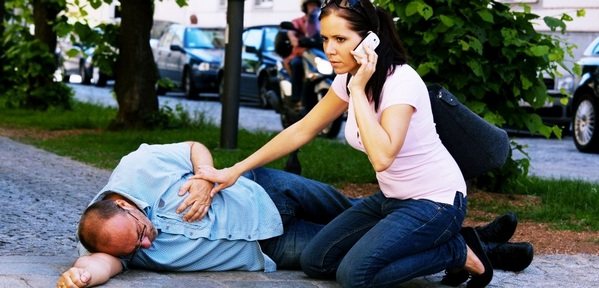
Proper first aid consists mainly of monitoring and calming the patient. If this is not done, attacks of the disease may become more frequent, as the victim will worry about his condition until complex treatment is fully completed.
Treatment of epilepsy in a child
Children are the most common patients diagnosed with epilepsy. Symptoms may appear immediately after birth, during primary school or adolescence.
Moreover, the sudden onset of an illness in a child with absolutely healthy parents causes bewilderment among the latter: what can provoke an attack of epilepsy in a child?
If a child has had at least two attacks, then he needs to take drugs such as valproate (Convulex), phenobarbital or carbamazepine, as well as Topomax and Keppra.
Taking these drugs is long-term; regularity is very important; if regularity is not observed, attacks may recur.
Most often, one drug is enough to prevent seizures. Antiepileptic drugs cause decreased attention, drowsiness, and lower school performance, but in no case should they be canceled or skipped, because withdrawal can immediately cause an attack. Each attack pushes the child’s development back.
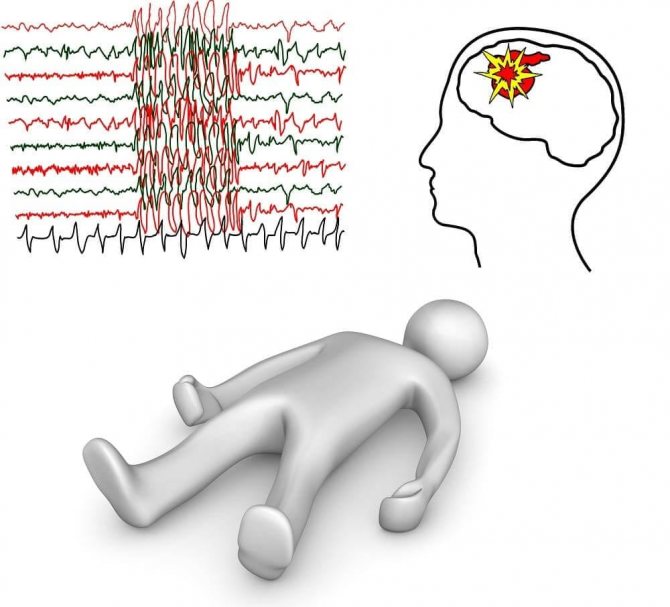
The drug Convulex is used under the control of valproic acid in the blood. If valproic acid in the blood is more than 100 mcg/ml, then the dosage of the drug cannot be increased; if it is less than 50 mcg/ml, then the therapeutic dosage has not been achieved and the dose must be increased.
If a child has had at least one attack, then for a month he is strictly prohibited from any massage, drugs that stimulate the central nervous system, as well as classes with a speech therapist.
In case of symptomatic epilepsy, the tumor is removed, after which the attacks completely stop.
A new method has also appeared in the treatment of epilepsy - stimulation of the vagus nerve. To do this, the patient is implanted with a special electrical device. Stimulation of the vagus nerve improves the patient's emotional state.
What not to do during an attack
Wasting time is one of the main mistakes of people who want to provide assistance. Patients suffering from epilepsy take medications. But during an exacerbation of the condition, they are not necessary. Therefore, trying to find medicine in your bag is a useless and inappropriate action, which amounts to a waste of time. Without wasting a minute searching for medications, you need to start providing assistance and avoid making the following types of mistakes:
- Purposeful, enhanced unclenching of the jaws. Leads to damage to the hands of the person providing assistance and injures the patient’s teeth.
- Ignoring the need to soften the blows. Leads to closed or open head injury, increased consequences of traumatic brain injury, and the development of nosebleeds.
- Limiting the patient's movement. In 30% of cases of exacerbation of epilepsy, the patient does not want to take a horizontal position, feeling an improvement in health while walking. There is no need to force the patient to lie down.
- Neglecting the rule of fixing the tongue. Causes damage or suffocation.
- Purposeful holding of legs during convulsions. Leads to bone fractures and hip dislocations.
Methods such as placing a spoon in the patient’s mouth or fixing the tongue with various objects lead to damage to soft tissues and teeth.
Epilepsy is a neuropsychiatric disease with a tendency to seizures. Chronic pathology cannot be completely cured, but is amenable to medical control. About 40 million people are susceptible to this disease. And if there are no relatives around who suffer from this disease, then you still need to know what to do in case of epileptic brain damage. Any person may need help.
Actions after an epileptic attack
First aid for epilepsy helps to avoid serious consequences, but after the seizure stops, the person also needs the help of others. When recovering from an attack, the patient requires psychological help. Before the doctors arrive, it is important to ensure psychological comfort and the person is in a comfortable position. After an attack, patients do not remember the events that occurred, so it is important to remain calm when interacting with them.
Residual effects after seizures can last up to 15 minutes. In case of a prolonged attack lasting more than 3 minutes, you must call an ambulance. In addition, the help of specialists is necessary when a patient is injured, water enters the lungs, or during the first epileptic attack.
Emergency care for epilepsy is an important undertaking. However, after an attack, the patient needs careful examination and treatment. Diagnosis of epilepsy is carried out in the neurology clinic of the Yusupov Hospital, equipped with European equipment.
Maintenance therapy and regular monitoring by neurologists do not prevent people with epilepsy from leading a full life. However, every person needs to know how to provide help for epilepsy if an attack occurs in a relative, colleague or passerby. You can make an appointment with a neurologist by calling: Yusupov Hospital.
Neurologist, Doctor of Medical Sciences
Epilepsy and psychosomatics
The reasons discussed above indicate external and genetic reasons for the development of the disease. But why else can epilepsy develop? Psychosomatics plays a crucial role in the formation of the disease.
Medicine interprets an epileptic seizure as a one-time excitation in a separate part of the brain, as a result of which the body goes out of control. But the causes of such dividing contradictions within a person are not always organic brain damage. Constant violence against the individual, negative experiences, stress - all this accumulates over a long time and can lead to the development of the disease.
Provoking factors of development and psychosomatics
Cryptogenic forms of the disease are not manifested by neuroimaging methods and, according to psychologists, are of a psychosomatic nature. Psychosomatic causes of epilepsy are diagnosed at an appointment with a psychologist and manifest themselves at different ages. People are especially susceptible to them during synthetic periods of life. These include:
- transitional age;
- the beginning of the menstrual cycle in girls;
- parental overprotection and abandonment;
- experiencing stress or depression;
- difficult pregnancy.
Important! Reflex epilepsy is provoked by external stimuli: bright light, loud music, flashing pictures. Treatment for this type of disease involves avoiding the stimulus.
Epilepsy: causes in adults
Falling sickness is caused by negative emotional experiences to which a person has been exposed for a long time. The causes of epilepsy in adulthood depend on the environment in which a person lives and works, here are the main ones:
- feeling of depression, detachment from the world around you;
- lack of understanding of the mechanisms of interaction with others, loneliness;
- denial of oneself, one’s right to happiness, freedom and even life;
- constant neuroses, panic attacks, anxiety, persecution mania;
- conflict with oneself, excessive demands, pedantry, perfectionism;
- high level of aggression towards oneself and others.
If you are constantly exposed to these feelings, then the feeling of discomfort begins to manifest itself on the physical level. The habit of constantly giving up one’s desires provokes not only prolonged neuroses, but also a feeling of despair. The combination of these factors contributes to the development of epilepsy.
Mental disorders in epilepsy
The appearance of mental signs of epileptic disease is easily confused with other abnormalities. The most common are:
- dystrophy;
- sleepwalking;
- twilight disorder (a feeling of unreality of what is happening);
- acute psychosis (aggression, poor health, memory loss);
- epileptic oneiroid (thinking dysfunction);
- hallucinations;
- dementia;
- signs of schizophrenia (disintegration in thoughts and actions).
Since the “falling sickness” is still being studied, there may be even more violations, but early diagnosis and awareness of the problem is half the way to recovery.
Bibliography
- ICD-10 (International Classification of Diseases)
- Yusupov Hospital
- Bryukhanova N.O., Zhilina S.S., Ayvazyan S.O., Ananyeva T.V., Belenikin M.S., Kozhanova T.V., Meshcheryakova T.I., Zinchenko R.A., Mutovin G. R., Zavadenko N.N.. Aicardi-Goutieres syndrome in children with idiopathic epilepsy // Russian Bulletin of Perinatology and Pediatrics. — 2020. — No. 2. — P. 68–75.
- Victor M., Ropper A.H. Guide to neurology according to Adams and Victor: textbook. manual for the postgraduate system. prof. physician education / Maurice Victor, Allan H. Ropper; scientific ed. V. A. Parfenov; lane from English edited by N. N. Yakhno. — 7th ed. — M.: Med. information agency, 2006. - 677 p.
- Rosenbakh P. Ya.,. Epilepsy // Encyclopedic Dictionary of Brockhaus and Efron: in 86 volumes (82 volumes and 4 additional). - St. Petersburg, 1890-1907.
Prices for services *
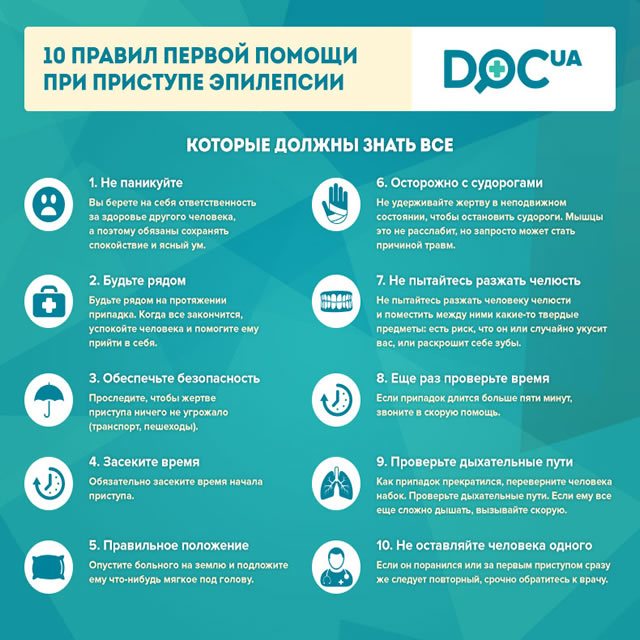
If, against the background of an attack, it becomes necessary to call an ambulance and upon arrival, doctors determine that the patient’s condition requires hospitalization, he is sent to the hospital department. There the patient will be examined and the necessary medical care will be provided. Antiepileptic and anticonvulsant drugs will be administered.
Among the examinations, the patient will have to undergo encephalography, blood tests (biochemical, clinical), and ECG. Additionally, an MRI of the brain is performed. Information from the patient's medical history and interview is taken into account. Encephalography allows you to determine epileptic activity from brain impulses. MRI – exclude the presence of tumor processes. A blood test can determine the presence of an inflammatory process.
The patient must recover from an epileptic attack. What to do in this case:
- It is recommended to turn the person on their side to prevent the root of the tongue from retracting.
- The head is held in place until consciousness returns completely.
- Ensure proper rest if a seizure occurs indoors. If you have an attack on the street, you need to ask those around you to disperse in order to provide psychological comfort to the patient.
- Provide support if the person tries to get up and walk.
- At the patient's request, stay with him for a while.
The recovery period after seizures takes up to 30 minutes. Typically, people suffering from epilepsy know the details of their disease and decide for themselves what to do next. You should not offer medications to the patient.
It is necessary to call doctors if:
- first seizure;
- lack of consciousness after convulsions;
- patient injury;
- attack lasting 3 minutes;
- convulsions occurred in a child, pregnant woman or elderly person;
- The seizure happened in the water.
Epilepsy is a disease with individual characteristics. Some people have several severe attacks per day, while others have them once a year or lifetime. In some patients, seizures occur only during sleep.
Treatment of epilepsy, as well as treatment of cerebral vessels. consists of taking anticonvulsant, antiepileptic, neurotropic drugs. Patients often ask their doctor how to prevent an epileptic attack? It won't be possible to do this.
You can reduce the likelihood of seizures with medications and preventive measures. You need to visit your doctor regularly and follow his recommendations. Do not change the prescribed medications or change the dosage yourself.
Try not to drink alcohol, coffee, spicy foods: these foods irritate the nervous system. A rapid transition from darkness to light must be avoided. Try not to look at bright flickering lights, water reflections or photo effects at the disco.
Adequate sleep helps with epilepsy. Lack of sleep, night awakenings, and changes in the time of falling asleep provoke seizures.
Basic moments
Epileptic seizures are almost always a surprise to the patient and a shock to others. A person’s safety during an attack depends on the actions of whoever is nearby.
First aid is to prevent injury to the patient. The main thing is not to panic and adequately help the victim: free your breathing, hold your head, do not unclench your teeth and insert hard objects into your mouth.
The official side of the issue
Epilepsy attack. Tonic and clonic phases.
Despite numerous discoveries in the field of this disease, many countries today do not adequately recognize a disease such as epilepsy. For example, in China and India, patients suffering from epileptic seizures are legally prohibited from marrying or officially obtaining employment.
A strict law banning marriage also existed in the UK until 1970, and in the USA an epileptic could legally be denied entry to various public places, be it a theatre, cafe or concert. Negative attitudes towards people suffering from epileptic seizures are also evident in the Russian Federation.
The World Health Organization, along with the International League Against Epilepsy and the International Bureau of Epilepsy, annually conduct a number of awareness-raising and charitable events to raise awareness and further change people's attitudes towards this neurological disease. Such activities are aimed at studying how the symptoms of the disease manifest themselves, aspects of providing first aid during an epileptic attack, providing patients with all necessary medications at the state and regional levels, as well as expanding treatment options for all patients with epilepsy.
Official statistics state that around the world there are about 50 million people with recurrent attacks of epilepsy. Ten percent of people have experienced an epileptic attack at least once in their lives that is not associated with brain disorders. Symptoms similar to an epileptic seizure can occur after experiencing a sudden shock, a nervous breakdown, or post-traumatic stress disorder.
The person experiences sudden spasms throughout the body, numbness, trembling, panic attacks, or complete apathy. Also, epilepsy symptomatically overlaps with some mental illnesses, and therefore, when the first symptoms of an attack occur, it is necessary to consult a doctor and carry out a differential diagnosis, and then receive appropriate treatment.
How to distinguish a hysterical seizure from an epileptic one
Seizures in epilepsy occur suddenly or after warning signs of several hours or days. The patient may experience a change in odors, increased heart rate, and nausea.
But the people around him cannot see such changes, so they should focus on enlarged pupils in daylight and the patient’s increased irritability. Dementia in epilepsy will be indicated by hyperactivity or, conversely, severe drowsiness. Brief muscle twitching may occur.
You also need to know how to act in case of epilepsy if there is a suspicion that a person will soon have an attack. The main task is to protect the patient from possible head injury: the surrounding space is cleared, potentially dangerous objects are removed.
Important! If the attack begins indoors, then you need to open the windows. If a seizure occurs on the street, the patient is moved, if possible, to a deserted place if there is a threat to life: a roadway, a pedestrian crossing, a body of water.
Sometimes people confuse an epileptic seizure with a hysterical attack, because when it develops, a person can also experience convulsions. However, this condition still has differences. A seizure caused by hysteria occurs due to a clear and obvious stimulus or a traumatic situation. Often close people can cause hysteria due to constant quarrels and omissions.
Hysteria is more often observed in pregnant women, girls, mature people who have encountered problems in life, as well as in the elderly. As a rule, it is not able to begin spontaneously, which is inherent in epilepsy syndrome.
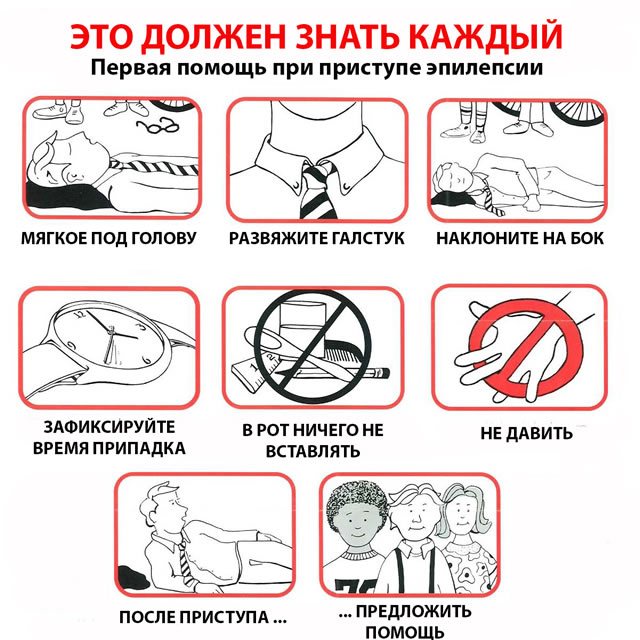
During a hysterical attack, people fall carefully and slowly, while trying not to hit their heads on a hard surface. The skin of such people may become pale or red, but you will not see a blue tint, since the person’s breathing will be fine.
The patient's consciousness during the onset of hysteria is preserved in the same way as the reaction to external stimuli, cold, pain, and so on. Movements during a hysterical attack are chaotic. Also, such a person cannot wet himself, because he is in a “healthy” consciousness and understands what is happening around him. Patients are able to speak or scream on their own, which is impossible to do during an epileptic attack.
Another characteristic difference is that after hysteria a person does not fall asleep.
As many studies show, 70% of patients with epilepsy can be completely cured of the disease, thereby restoring health and normal functioning of the body. The therapeutic effect for victims is provided with the help of antiepileptic drugs. But sometimes attacks return or appear during complex therapy. Then it will be possible to normalize the general condition only when the patient is helped to cope with pain and other symptoms of the disease.
When should you consult a doctor?
An appointment with a specialist is required in the following cases:
- The condition developed for the first time, against the background of complete well-being.
- The attack occurred a second time.
- The exacerbation was facilitated by the use of alcohol or certain medications.
- Previously suffered a traumatic brain injury (especially significant if the damage occurred within the last year).
- There is a suspicion of the presence of a tumor process - benign or malignant.
- Before the seizure developed, the patient had complaints of headache and dizziness for a certain time. There were signs of meningitis and encephalitis.
- The attack occurred in representatives of the most vulnerable groups - children, the elderly or pregnant women.
- During an exacerbation of the pathological condition, damage to soft tissues or osteochondral structures (including teeth) occurred.
- The duration of the attack is more than 3 minutes.
Even if you didn’t need to call a medical team, and you managed to stop the epilepsy attack on your own, you should think about visiting a doctor. A full examination of the brain, a blood test and a comprehensive consultation with a neurologist will help identify the cause of the disorder.
